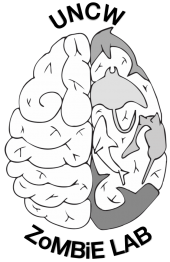BIO 485: Sensory Biology
Sensory Biology considers the senses from a whole organism perspective – from signal detection at the periphery and on to how the brain processes the information to produce a response. Over the course of the semester, we explore how animals detect, process, and respond to sensory stimuli such as light, odors, sound and temperature. We discuss the mechanisms and neural processes used by vertebrates, invertebrates, and even plants to sense the external and internal world. The comparative approach emphasizes common principles of sensory coding, as well some of the unique strategies that have evolved to address specific biological needs. Emphasis is on the senses that are best understood (visual, somatosensory, auditory, and olfactory), but we spend a third of the course covering more mysterious senses, including echolocation, electroreception, and even plant sensory biology. At the end of the class, you will have an excellent working knowledge of how information arriving through the sensory organs is processed to produce perception and guide behavior.

I generally teach BIO 485 in the Spring semester. You can check out more about the course here: Course Link (new course coding coming soon!)
